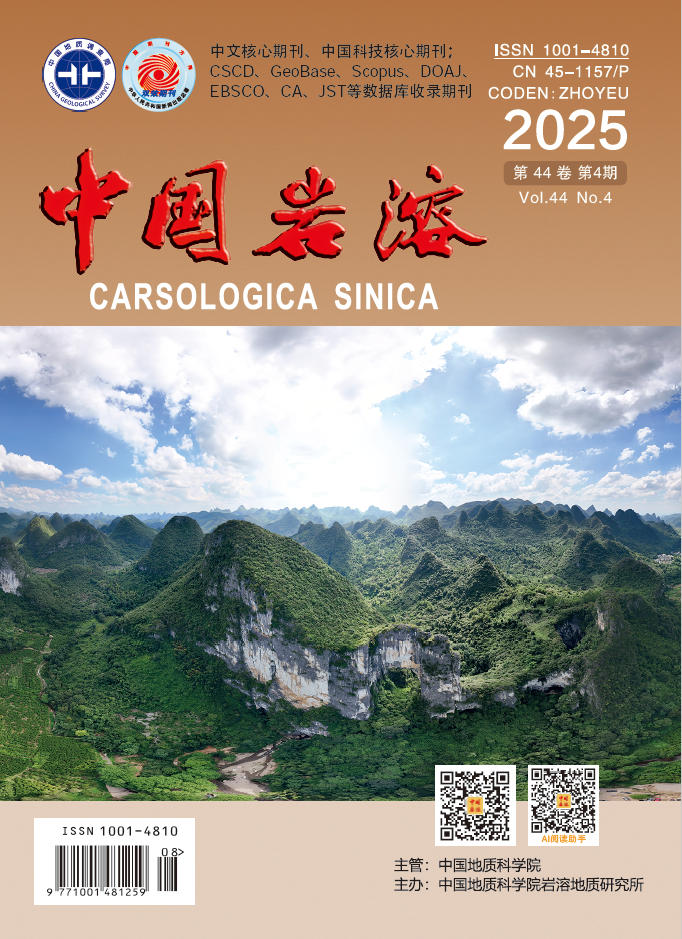2024, 43(4): 982-990.
doi: 10.11932/karst20240414
Abstract:
Distributed in almost all provinces, karst areas in China cover approximately one-third of the national land area. Therefore, scientific research in the field of karst is one of the hotspots of geological studies. Since its establishment, the Karst Geological Research Institute has conducted hydrogeological surveys, environmental geological surveys, karst subsidence, ecological environment, geological relics, oil and gas resources, karst landscapes, and other investigations in karst areas. This institute has completed over 1,500 scientific research projects of the Ministry of Science and Technology, the National Natural Science Foundation of China, the Ministry of Land and Resources, the Guangxi Science and Technology Department, and other departments, as well as technical service projects in local economic construction, with over 100,000 archives and data. These long-term accumulated geological data and scientific and technological achievements are a giant treasure containing meaningful and valuable knowledge and rules for us to develop. In order to tap its potential value, it is necessary for us to integrate and realize resource sharing services, improve data accessibility, break down various barriers to data utilization, and establish an integrated data resource management system. We should improve the utilization value of various data resources, and classify and organize electronic resources on a large scale and in a standardized way. We should also unify scheduling and resource management, and realize the classification, retrieval, download, and use of various data resources. Because by doing so, we can provide data support for researchers and technicians in the field of karst research and survey through improving their efficiency in data utilization.Taking SQL Server as the relational database and ArcGIS Server as the spatial map service engine, the data layer of the service system for karst geological data management has been developed by open-source technology frameworks such as ASP NET CORE 6.0 MVC framework, C#, JavaScript, HTML language, integrated WebGIS technology, Echart, jieba word segmentation, etc. The main functional modules include data statistics, data uploading, comprehensive table query module, directory query based on word segmentation technology, one map module for karst geological data, and modules of map service, map sheet conversion, borrowing management, user management, etc. based on ArcGIS JS.The data statistics module displays the quantity statistics results of various data categories in the system. In order to visually display the data, the bar chart and line chart drawing functions of open-source framework have been used to design a set of visual interfaces, with the data category as the horizontal axis and the data quantity as the vertical axis. This module facilitates users to quickly understand the quantity of various karst geological data.The comprehensive table query module of geological data has been developed based on open-source tables. By feat of powerful interaction and capabilities of displaying various geological data information to users that DataTables has, this module can display various information on geological data to users, and provide functions such as fuzzy retrieval, advanced retrieval, sorting, and data export. According to their needs, users can obtain data by selecting different attribute sorting, setting the numbers of pages and multi-attribute joint query conditions, etc. Through multi-attribute conditional joint query, the data query range can be narrowed down, and the query results can be accurately obtained, solving the problem of large data retrieval.The directory query module can realize the retrieval of geological data based on the content input by users. This module decomposes the query statement input by users, queries word by word to improve the query accuracy, and facilitates users to obtain the required data. Based on the results of word segmentation query, users can further filter data by data category, scale, and administrative region, and the keywords searched are highlighted in the query results. Users can click on the title to enter the page for data details.With the use of spatial information on geological data, the one map module for karst geological data can realize the map spatial retrieval of various geological data, based on spatial topology. Users can choose to query data categories and scales, and obtain data information through various methods such as inputting map sheet numbers, dragging boxes, and polygon queries. The map displays the location of the data, and the list on the right displays the name of the data. If users click on the spatial position of the data on the map or the name of the data in the query results list, the data information window will display for users to enter the page for data details.The map service module can realize the online viewing and attribute query of professional map elements. Users can select the professional geological map layer to be queried according to their needs, switch between vector maps, remote sensing images, terrain, and other base maps, view the legend, adjust the layer transparency, and use point selection, line selection, and surface selection to query attribute information.These modules use various ways to display the spatial, temporal, related attributes, and other metadata information of karst geological data to users, realizing the informationization of geological data management services and improving the efficiency of data query and access.






